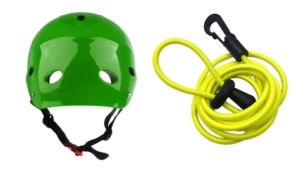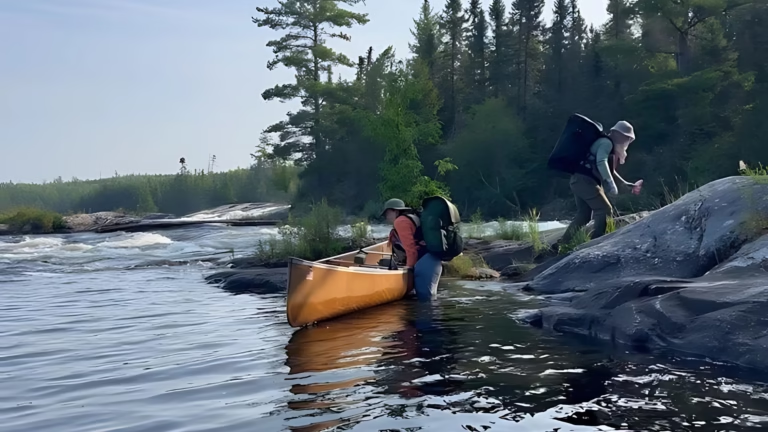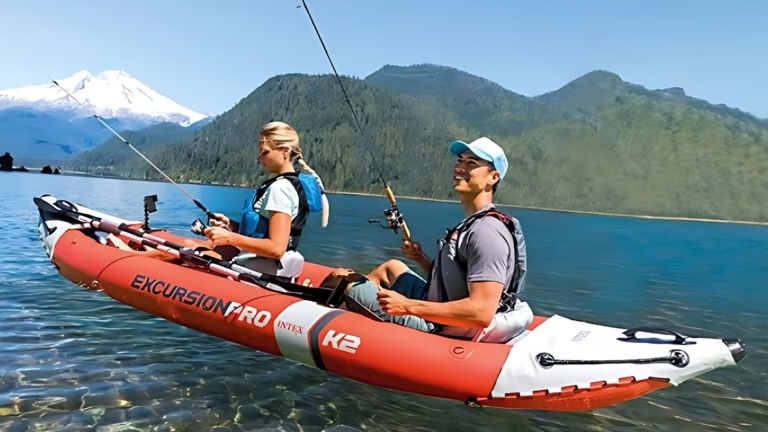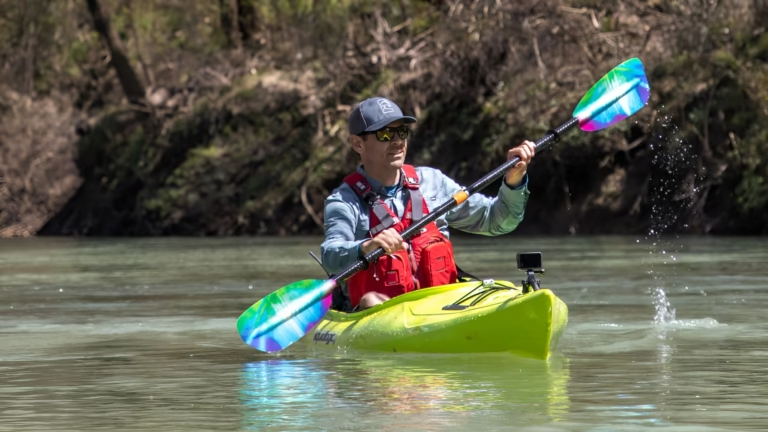Kayaking Safety Tips for Ocean Kayaking . Wear a life jacket and carry a marine VHF radio. Always check weather forecasts before heading out.
Ocean kayaking offers an exhilarating experience, surrounded by the beauty and unpredictability of the sea. Proper preparation ensures a safe and enjoyable adventure. Understanding the unique challenges of ocean kayaking is crucial. The open water presents risks like strong currents, sudden weather changes, and potential wildlife encounters.
Equip yourself with essential safety gear, including a life jacket, marine VHF radio, and navigation tools. Learning basic self-rescue techniques can be lifesaving. Always inform someone about your kayaking plans and expected return time. With the right precautions, ocean kayaking can be a thrilling and safe way to explore marine environments.
Essential Gear
Ocean kayaking is an exciting adventure, but safety comes first. Having the right gear is essential for a safe trip. Here are the key items you need to stay safe and enjoy the ocean waves.
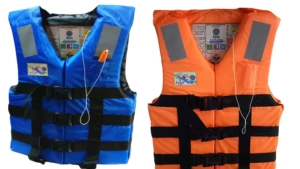
Life Jackets
A life jacket is the most crucial safety gear. It keeps you afloat if you fall into the water. Choose a life jacket that fits snugly but comfortably. Make sure it is U.S. Coast Guard approved. Wear it at all times, even if you are an excellent swimmer.
Helmets
Helmets protect your head from injuries. This is especially important in rough waters or rocky areas. Choose a helmet designed for water sports. It should fit well and have good ventilation. A helmet can save your life in unexpected situations.
Paddle Leashes
A paddle leash keeps your paddle attached to your kayak. This is vital if you encounter strong waves. Without a leash, you might lose your paddle and control. Secure the leash to your kayak and paddle. This simple tool can prevent a lot of trouble.
| Item | Purpose |
|---|---|
| Life Jackets | Keeps you afloat |
| Helmets | Protects your head |
| Paddle Leashes | Keeps paddle secure |
Remember, the ocean can be unpredictable. Always be prepared with the right gear. Your safety depends on it.
Weather Conditions
Understanding weather conditions is vital for ocean kayaking safety. Weather can change suddenly, making it essential to be prepared. This section will help you learn about checking forecasts and identifying safe conditions for your kayaking adventure.
Checking Forecasts
Always check weather forecasts before planning your trip. Use reliable sources such as:
- National Weather Service
- Local weather apps
- Marine weather websites
Look for specific information like wind speed, wave height, and tides. These details can help you make informed decisions.
Wind speed should be under 15 mph for safe kayaking. High winds can create dangerous conditions.
Wave height is another critical factor. Waves over 4 feet can be challenging for kayakers. Stick to areas with smaller waves.
Tides can affect water levels and currents. Check tide tables to understand the best times to kayak.
Identifying Safe Conditions
Recognize safe conditions by observing the sky and water. Clear skies and calm waters are ideal for kayaking.
Cloud formations can indicate changes in weather. Dark, heavy clouds suggest storms are coming. Plan to avoid these conditions.
Water color can also give clues. Clear blue water often means calm seas. Murky or choppy water can signal unsafe conditions.
Temperature matters too. Cold water can be dangerous. Wear appropriate gear to stay warm and safe.
Always trust your instincts. If something feels off, it’s better to wait or reschedule your trip.
Use this information to stay safe and enjoy your kayaking adventure.
Navigation Skills
Ocean kayaking offers an exhilarating adventure. Proper navigation skills ensure safety and confidence. Learn to navigate effectively to enjoy your journey.
Using A Compass
A compass is essential for ocean kayaking. It helps you maintain your direction.
Follow these steps to use a compass:
- Hold the compass flat in your hand.
- Ensure the needle points north.
- Align the compass with your intended direction.
- Keep checking the compass to stay on course.
Practice using a compass before your trip. It builds confidence and skill.
Reading Nautical Charts
Nautical charts provide vital information for ocean kayaking. They show water depths, hazards, and landmarks.
Steps to read nautical charts:
- Identify your starting point and destination.
- Note the water depths along your route.
- Mark any potential hazards.
- Use landmarks to navigate.
Understanding nautical charts enhances your kayaking experience. It ensures a safer journey.
Use both a compass and nautical charts for effective navigation. They are vital tools for ocean kayaking safety.
Rescue Techniques
Ocean kayaking is an exciting adventure, but safety is crucial. Knowing rescue techniques can save lives. This section covers self-rescue and assisted rescue methods.
Self-rescue
Self-rescue is vital for solo kayakers. Practice it regularly to master.
- Re-entering Your Kayak: Flip your kayak upright. Position yourself at the cockpit. Kick your legs to climb back in.
- Using a Paddle Float: Attach the float to your paddle. Use it as an outrigger. It helps stabilize the kayak.
- Roll Techniques: Learn the Eskimo roll. It helps you right your kayak without exiting.
Assisted Rescue
Assisted rescue is essential for group kayaking. Know how to help others.
- T-Rescue:
- Approach the capsized kayak perpendicularly.
- Lift the bow onto your kayak’s deck.
- Flip the kayak upright and help the paddler re-enter.
- Paddle Float Rescue:
- Hand the paddle float to the capsized kayaker.
- Stabilize their kayak while they use the float.
- Assist them in climbing back in.
- Scoop Rescue:
- Position your kayak parallel to the capsized kayak.
- Help the paddler slide into your cockpit.
- Transfer them back to their kayak.
Communication Tools
Having the right communication tools is crucial for safe ocean kayaking. These tools help you stay connected in emergencies. They also ensure you’re always in touch with others.
Marine Radios
Marine radios are essential for ocean kayaking. They allow you to communicate with other boats and the coast guard. You can send and receive updates on weather conditions.
- Ensure your radio is waterproof.
- Keep it charged or have spare batteries.
- Learn the basic radio protocols and channels.
Whistles
A whistle is a simple yet effective tool. It can attract attention if you need help. Attach it to your life jacket for easy access.
| Feature | Importance |
|---|---|
| Waterproof | Ensures it works in wet conditions |
| Loud | Heard over long distances |
Flares
Flares are vital for signaling your location. Use them in low-visibility conditions. They can help rescuers find you quickly.
- Keep them in a waterproof container.
- Learn how to use them before your trip.
- Check their expiration dates regularly.
Physical Preparation
Before hitting the ocean waves, physical preparation is crucial for a safe and enjoyable kayaking experience. This section covers essential exercises to build strength and endurance.
Strength Training
Strength training helps you paddle longer and handle tough conditions. Focus on exercises that target your upper body, core, and legs.
- Push-Ups: Strengthen your chest, shoulders, and triceps.
- Pull-Ups: Improve your back and arm muscles.
- Planks: Engage your core for better balance and stability.
- Squats: Build leg strength for powerful paddling.
| Exercise | Muscle Group |
|---|---|
| Push-Ups | Chest, Shoulders, Triceps |
| Pull-Ups | Back, Arms |
| Planks | Core |
| Squats | Legs |
Endurance Exercises
Endurance exercises keep you paddling longer without getting tired. Incorporate these activities into your routine:
- Running: Boosts cardiovascular health and stamina.
- Swimming: Improves overall endurance and breathing control.
- Cycling: Strengthens legs and enhances lung capacity.
- Rowing Machine: Mimics kayaking movements and builds endurance.
Consistent practice of these exercises will prepare you for ocean kayaking. Stay safe and enjoy the adventure!
Wildlife Awareness
Ocean kayaking offers a unique opportunity to experience marine life up close. It’s important to be aware of your surroundings. Respecting wildlife ensures a safe and enjoyable adventure.
Identifying Marine Life
Recognizing different marine species helps you stay safe. Here are some common creatures you may encounter:
- Dolphins: Friendly and curious, often seen swimming near kayaks.
- Sea Turtles: Slow-moving and harmless, usually found in warm waters.
- Whales: Majestic and large, keep a respectful distance.
- Seals: Playful but can be territorial, observe from afar.
Avoiding Dangerous Creatures
Some marine creatures can pose threats. Knowing how to avoid them is crucial:
| Creature | Risk | Safety Tips |
|---|---|---|
| Sharks | Potentially dangerous | Stay calm and avoid sudden movements. |
| Jellyfish | Stings can be painful | Wear protective clothing and avoid contact. |
| Stingrays | Barb can cause injury | Shuffle feet when walking in shallow water. |
Always keep a safe distance from wildlife. Never feed or touch marine animals. Respect their habitat to ensure mutual safety.
Environmental Respect
Kayaking in the ocean demands a deep respect for the environment. Respecting nature ensures our oceans remain beautiful and healthy. Here are some tips to help you practice environmental respect while ocean kayaking.
Leave No Trace
Practice the principle of Leave No Trace to keep the ocean clean. Follow these simple tips:
- Carry a small bag for your trash.
- Pack out everything you bring in.
- Do not leave any waste in the ocean.
Always check your kayak for any debris before and after your trip. This helps to keep the water clean and safe for marine life.
Protecting Marine Ecosystems
It is important to protect marine ecosystems while kayaking. Here are some ways to do this:
- Avoid paddling too close to coral reefs. They are very fragile.
- Keep a safe distance from marine animals. Do not disturb them.
- Use eco-friendly sunscreen. This prevents chemicals from harming the water.
Remember, our actions have a direct impact on ocean health. By following these tips, you help protect the marine environment.
Frequently Asked Questions
What Are The Essential Kayaking Safety Tips?
Always wear a life jacket. Check weather forecasts. Avoid strong currents. Stay close to shore. Inform someone of your plans.
How To Prepare For An Ocean Kayaking Trip?
Check your kayak for damage. Bring safety gear. Check weather and tides. Inform someone of your route.
What Should I Do If I Capsize?
Stay calm. Hold onto your kayak. Try to re-enter from the side. Use a paddle float if needed. Signal for help.
How To Choose A Life Jacket For Ocean Kayaking?
Choose a life jacket with high buoyancy. Ensure it fits snugly. Look for features like pockets and reflective strips.
Conclusion
Ocean kayaking can be an exhilarating adventure. Prioritize safety to ensure a fun and memorable experience. Wear a life jacket, check weather conditions, and paddle with a buddy. Proper preparation and awareness can prevent accidents. Stay informed, stay safe, and enjoy the beauty of ocean kayaking.
Happy paddling!

